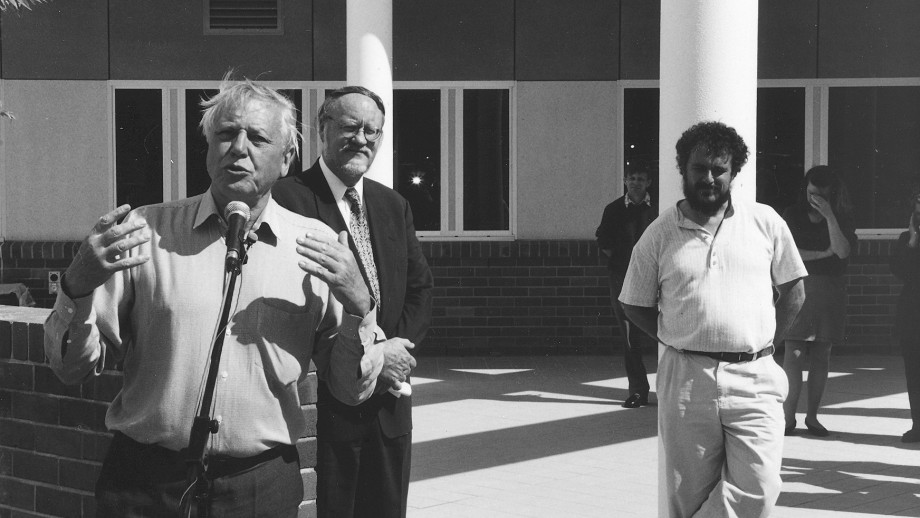Celebrating 50 years of biology at ANU

This December, the ANU Research School of Biology celebrates its 50th anniversary.
Founded in 1967, the School comprises of four divisions, spanning Ecology and Evolution, Biomedical Science and Biochemistry, Plant Sciences, and the Biology Teaching and Learning Centre.
“Biologists are used to dealing with complex origins, and the ANU Research School of Biology had many beginnings,” said Professor Allen Rodrigo, Director of the ANU Research School of Biology.
“We celebrate the 50th anniversary of one of those beginnings, as way of celebrating all our beginnings.”
Since its foundation in 1967, the School has become one of the largest at ANU, comprising 600 staff, including academic and professional staff, graduate students and affiliates.
Many significant research breakthroughs have been uncovered over the School’s 50 year history, including instruments helping to diagnose glaucoma in millions of people around the world, and the discovery of the first gene for the world’s most abundant bio-polymer, plant cellulose - a landmark advance in plant science.
In 2005, Dr Howard Bradbury discovered a way to prevent the Konzo disease in Africa, which causes irreversible paralysis of the legs, often in women and young children, by using a 'wetting method' that removes the poisonous cyanide compound from cassava flour.
“Biology truly is the science of the 21st century – from climate change, to emerging diseases, to feeding the world’s growing population, and conserving our biological heritage for the future,” said Professor Rodrigo.
“At ANU, our research spans all these areas, making its way to the next generation of Australians via our curriculum.”
To mark the occasion, the School is holding a series of short talks from prominent researchers and an exhibition on Monday 4 December.
Professor Stefan Broer, Deputy Director of the ANU Research School of Biology, has been driving force behind the event.
“We’ve been working all year to put together the exhibition and program for our 50th anniversary celebration. We want to highlight the research, teaching and people from our first 50 years.”
“In the afternoon we have short talks from current researchers in the school, and in the evening we’ll bring out the big guns.
“We’ll hear from Professor John Shine, an alumnus who proposed the Shine-Dalgarno sequence that was crucial to the beginnings of biotechnology while he was a PhD student here, Professor Susanne von Caemmerer, part of the team that first modelled photosynthesis, Professor Jenny Graves who discovered that the Y chromosome is disappearing from mammalian genomes and was awarded the 2017 Prime Minister’s Prize for Science, and Adrian Horridge, who initiated animal navigation research in the School.”
The Dean of the ANU College of Science, Professor Kiaran Kirk, has congratulated the School on their anniversary.
“The ANU Research School of Biology, and its predecessor Schools and Departments, has, for 50 years, been a powerhouse of biological research, from the molecular to the ecosystem level.
“Discoveries by staff and students from the School populate today’s biology textbooks, and have had a significant impact on government policies.
“The School has also provided many generations of students with an education in the biological sciences that is second to none, and its alumni work and have impact all over the world.”
Public are invited to attend the event. For more information and to register, contact the Research Scool of Biology.
This article is one of a set featuring the achievements and memorable occasions in the History of Biology at ANU.
